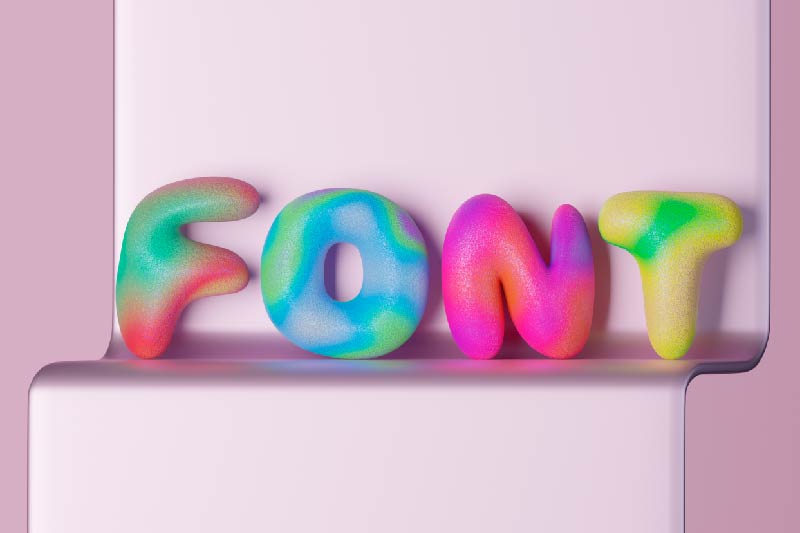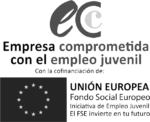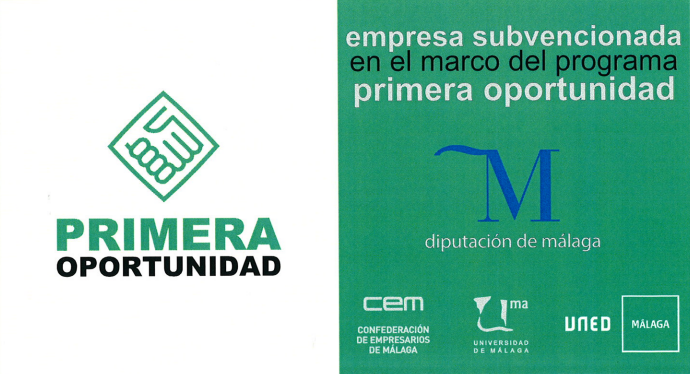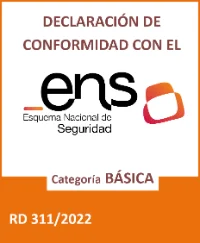What is typography and why is it important?
Typography is the art and technique of designing and arranging typefaces to make language legible, understandable and attractive when displayed on a screen or in print. This concept includes the selection of fonts, type sizes, line spacing and character spacing. Typography is a fundamental component in graphic design and especially in email marketing. According to an EmailMonday survey, 60% of marketers believe that visual design, including typography, has a significant impact on the conversion rates of email marketing campaigns.
But why is typography important? Here's everything you need to know!
First, typography can affect the readability of your content. Well-designed text is easier to read and understand, which can result in longer dwell time and a better user experience. In the guide "Typography 101: A Guide to Choosing a Typeface", it is mentioned that a poor choice of typography can reduce information retention by up to 50%.
Secondly, typography contributes to the perception of your brand. Unique and stylised typefaces can make your brand more memorable and professional. Design psychologist Sarah Hyndman says: "Typography that is not well suited to its use can directly damage the message and perception of the brand".
Finally, choosing the right typography can influence user behaviour. Fonts.com points out that the right use of typography can increase click-through rates by 20%. Clear, attractive and consistent fonts can help guide readers through content efficiently, improving the user experience and increasing the effectiveness of email marketing campaigns.

Key factors in choosing the right typeface
Selecting the right typography can have a significant impact on the effectiveness of email marketing, especially for small business owners looking to maximise return on investment. First, it is essential to understand that typography affects not only the aesthetics of the message, but also its readability and brand perception. According to "Typography 101: A Guide to Choosing One", the right choice of fonts can increase readability by 30%, which directly affects response rates.
Aspects such as legibility and contrast are essential. Sans-serif typefaces such as Arial and Helvetica tend to be easier to read on digital screens. This is because they lack the ornaments at the ends of the letters, known as serifs, which are common in serif typefaces. According to a recent study, 67% of users prefer sans-serif typefaces in their emails because of their clarity and simplicity. However, serif typefaces such as Times New Roman can convey a sense of professionalism and tradition.
In addition, consistency is another key factor. Using different typefaces without criteria can result in a messy and unprofessional design. According to the same guide "Typography 101: A Guide to Choosing a Typeface", it is advisable to use the same typeface family for headings and body text, varying only in weight (bold, italic) to differentiate sections. This not only improves visual cohesion, but also makes it easier to read and keeps readers' attention, which is crucial to keep them engaged with the content.
Finally, consider compatibility with different devices and platforms. Not all fonts are universal, and some may not display correctly on all browsers or operating systems. Using web-safe fonts such as Arial, Helvetica, or Verdana ensures that your email will look as intended on most devices. Data from Litmus indicates that 49% of emails are opened on mobile devices, underlining the importance of choosing a font that is both readable and adaptable to different screen sizes.
Types of typefaces and their common uses
There are different types of typefaces that are used depending on the objective and the context in which they are going to be used. Each type has its own characteristics, advantages and disadvantages, which makes it necessary to know them in order to choose the right one. In this section we will explain the main types of fonts and their most common uses, especially in the field of email marketing. Let's get started!
Serif typefaces
Serif typefaces are characterised by small ornaments at the ends of the letters. These ornaments, known as serifs, make long printed text easier to read. They are common in formal documents such as newspapers, magazines and books. Examples of serif typefaces include Times New Roman, Georgia and Baskerville. In email marketing, serifs can convey professionalism and confidence when used in headers and subheads.
Sans Serif Fonts
Unlike serifs, sans serif typefaces have no ornamentation at the ends of the letters, which gives them a cleaner, more modern look. Arial, Helvetica and Calibri are some of the most commonly used. These typefaces are popular in web design and email because of their clarity and legibility on low-resolution screens. According to a HubSpot study, more than 60% of marketing emails use sans serif typefaces for body text, which explains their preference in the digital environment.
Display Fonts
Display fonts are designed to be used in large sizes. They tend to have more creative and eye-catching designs, making them ideal for titles and advertisements. A common example is Lobster, which is widely used in creative fields and promotional campaigns. If you want to capture the immediate attention of your subscribers in an email marketing campaign, using a display typeface in the subject line can be an effective strategy.
Manuscript Typefaces
Handwritten typefaces imitate handwriting and add a personal and authentic touch to messages. They are ideal for greeting cards, invitations and personalised emails. Typefaces such as Pacifico and Brush Script are popular examples of this style. However, they should be used sparingly in email marketing so as not to compromise the readability and professional appearance of the message.
If you have doubts about which one to use in each case, we help you to choose the most suitable one!
Common mistakes when choosing typography and how to avoid them
When it comes to choosing the right typeface, we often make a series of mistakes that lead us to make the wrong choice. Here we show you where to pay attention!
Failure to take readability into account
One of the most common mistakes when choosing a typeface is to prioritise aesthetic appearance over legibility. In email marketing design, it is crucial to ensure that text is easy to read on both mobile devices and desktop screens. According to a study by the UX Design Institute, text that is difficult to read can reduce conversion rates by as much as 21%. For small business owners, selecting the right typography can be the difference between capturing the customer's attention or losing them. To avoid this mistake, it is advisable to opt for sans-serif typefaces such as Arial or Helvetica, known for their clarity in different resolutions.
Ignorance of the psychology of sources
It may sound strange, but another common mistake is not considering the psychology of fonts. By this we mean that each typeface conveys a different emotion or perception, which can affect how the brand is perceived. For example, an elaborate typeface such as Times New Roman may convey formality and seriousness, while Comic Sans may come across as informal and unprofessional. According to branding expert Paul Rand, "the choice of typography can significantly influence the emotional relationship between the brand and the consumer." It is therefore essential for small business owners to analyse the message they wish to communicate and choose a typeface that reinforces that perception.
Ignore cross-platform compatibility
In email marketing, it is common to ignore the compatibility of fonts across platforms and devices, as some fonts may not be available or may not render correctly on certain operating systems or browsers. This can result in an email with an inconsistent design, negatively affecting the brand image. To avoid this mistake, a good practice is to use web-safe fonts such as Verdana, Tahoma and Georgia. In addition, it is always advisable to have a "guide to choosing a" typeface that includes back-up fonts to ensure consistent display across all devices and platforms.
Resources and tools for finding the perfect typeface
Choosing the right typeface is crucial for any marketing strategy, especially in the field of email marketing. There are several tools and resources that can help you in this task. In this section, we will discuss some of the most useful and popular options. There they go!
Google Fonts
Google Fonts is one of the more accessible platforms and used to find free fonts. It offers a vast collection of fonts that you can easily integrate into your designs. Each font is accompanied by technical details and examples of use, making it easy for those starting out with "typography 101 a guide to choosing a font".
Adobe Fonts
Adobe Fonts, formerly known as Typekit, is a premium tool for those looking for high quality fonts. The platform offers a vast bibliography of fonts that can be easily synced with Adobe Creative Cloud, facilitating integration into design and marketing projects.
FontSquirrel
FontSquirrel excels in providing high quality commercial fonts that are free for commercial use. This site is especially useful for those looking for freely licensed fonts for business projects. It also offers advanced tools such as the Webfont generator and font identifier.
By using these tools, you can find the perfect typography that not only complements your message, but also improves the quality and effectiveness of your email marketing campaigns.
Do you have any questions about how to choose the perfect typeface? Contact us!









